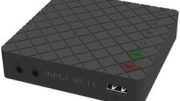Well, it’s winter now, isn’t it. Yes, it’s a winter wonderland, mantle of white, that sort of thing. The season’s still pretty new and you might be enamored of winter right now. But more winter storms are coming, you can count on it. And, it doesn’t matter if you’re living up north or down south, there’s a storm in your future. I can pretty much guarantee it.
When I think of storms, I think of the reason we all got cell phones in the first place. Yeah, we use them now for socializing and connecting with the world. But remember back when you got your first one? It was expensive, sure. But you could justify it. It was… for an emergency. Remember? Of course in the meantime your cell phone has become an important part of your life, more than you could have ever guessed.
Emergencies are coming
There’s going to be a storm. It’s going to knock out power lines. If you’re a northerner, it means snow. Southern folks get just as many storms, but they get rain instead. Either way, you could be in for some isolation if a power line goes down in your area. It could take anywhere from hours to days to get that power restored. You’ll lose home internet, you’ll lose TV. What’s left? That’s correct, your phone.
When emergencies hit, a lot of cell towers are ready. Many of them have battery systems that let them work for hours if the power is out. After that though, they begin to go dark. And that’s where cell boosters come in.
What a cell phone signal booster gives you in an emergency
A cell booster takes strong signal from outside, amplifies it, and pumps it out strongly inside. It also works in reverse, making the signal from your phone stronger as it goes out into the world. When cell towers start to go down, a stronger signal will go further and let you stay connected for a longer period of time. Not only that, your phone’s battery will last longer if you’re getting a stronger signal. So everything will work out better in the end.
But, cell boosters run on electricity, right?
Yes, yes they do. But they don’t take much. You can connect a cell phone signal booster to a 1,000 watt UPS and run it for hours and hours. A typical cell booster will use about 15 watts. Now the math is a little fuzzy here because every UPS is different. But your typical UPS is rated for 1,000 watts for one half hour. In other words, 500 watthours. Because a cell booster uses only 15 watts every hour (15 watt hours), you should theoretically be able to run that booster for about 30 hours off the charge of that UPS. Yes, as they say, “your mileage may vary.” It depends on the condition of the UPS’s battery and a lot of other factors. But one thing you can count on, that booster is going to last a long time if it’s connected to an uninterruptible power supply.
Also think about it this way: You may have upgraded your home with solar, meaning that you yourself can deal with a power outage pretty easily. The cell towers aren’t upgraded with solar, they still run on electricity or batteries. Having that cell booster is going to make it easier to reach distant cell towers, keeping you in touch with loved ones and needed information.
One last thought: if you have a cell booster in your vehicle, you’ll be able to run it easily when the car is running, meaning that even if the home booster runs out of power, you’ll still stay connected.
Get the right cell booster for your situation
Have I convinced you? If so, shop for a cell phone signal booster at Solid Signal. You’ll find the best prices and the best selection from all the major brands. Still not convinced? Call the experts to find out more. We have real, trained technicians in our Detroit-area corporate offices. Our techs are ready to talk to you during East Coast business hours. Call us at 888-233-7563, or just fill out the form below.
Cell boosters are a big part of your emergency response. Don’t be caught without one.





